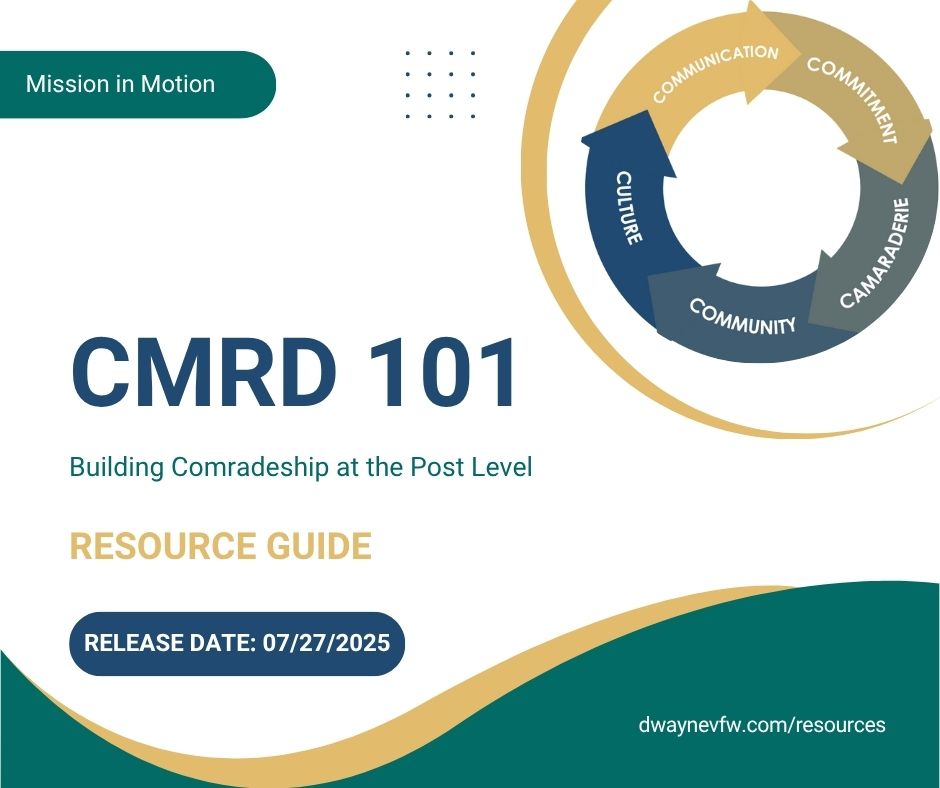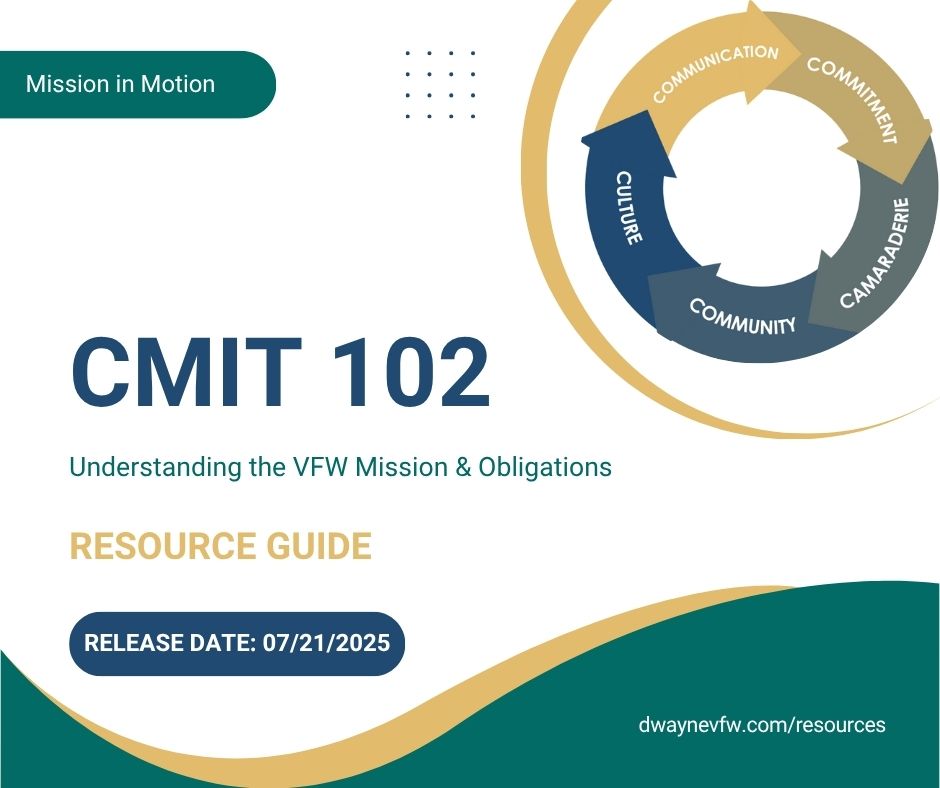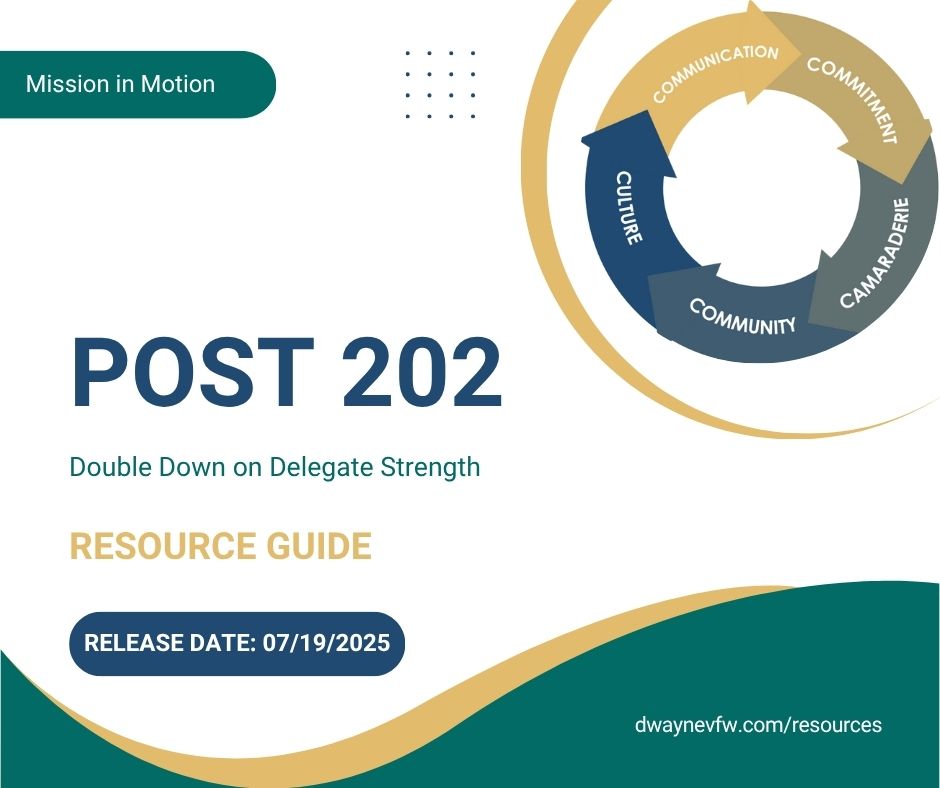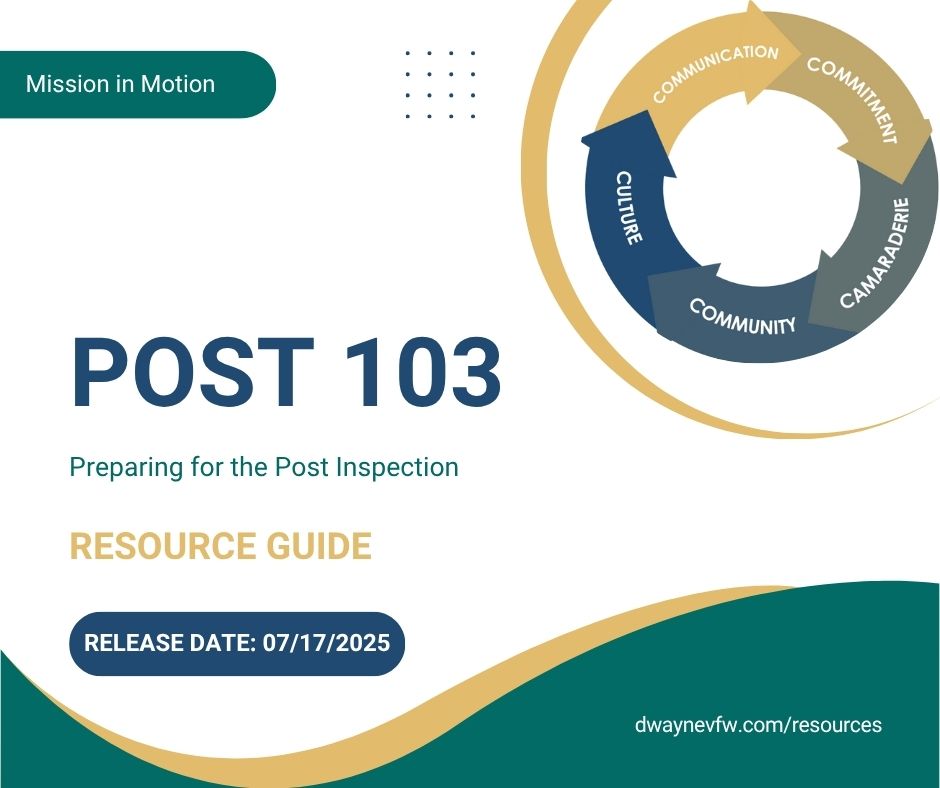Strong internal communication is the lifeblood of any effective organization, and the Veterans of Foreign Wars (VFW) is no exception! When serving in military units, we knew the value of structured communication. Simply put, there was a chain of command, and that chain of command preserved unity, discipline, and accountability. While the VFW is NOT a military organization, we are a fraternal organization of veterans, as such, the same principle holds true within the VFW. When internal communication is handled correctly, confusion is minimized, responsibilities are clear, and leaders are empowered at every level.
What is Internal Communication in the VFW?
Internal communication includes all the messages, updates, decisions, and bulletins, and orders exchanged between members, officers, and governing bodies within the organization. This is very different from external communication (i.e. social media Posts, media alerts, event flyers, or press releases). Hence, internal communication operates best when grounded in mutual respect and organizational purpose.
Internal communication in the VFW covers:
- Post officer-to-member updates
- Committee coordination and collaboration
- District-wide notifications or Department directives
- Conflict resolution handled at the appropriate level
- Communications related to events, policies, and expectations
When information properly flows within the organization, everyone from the newest member to the highest-ranking officer stays informed, involved, and aligned with the mission. It is consistent, timely, professional, and transparent.
Respecting the Chain of Command
The VFW’s structure exists for a reason, maintaining order, respect, and efficiency. The chain of command is not just a military relic; it’s a communication roadmap. Skipping steps in the chain can lead to confusion, frustration, and delays. Also, this can lead to inefficiencies and a waste of non-renewable resources (i.e. time). One common example of skipping steps in the Chain of Command would be when a comrade brings local issues straight to the Department or National without first seeking to address and resolve them at the Post or District
Understanding and following the proper chain:
- Post Members → Post Officers
- Post Officers → District Commander or Officers
- District → Department Leadership
- Department → National
This doesn’t mean concerns are ignored, quite the opposite. It means they are handled at the most appropriate and empowered level, giving local leaders a chance to solve local problems. Leaders at higher levels rely on their counterparts below to help resolve issues and implement solutions, not bypass them.
Best Practices for Internal Communication
VFW leaders and members should strive for communication that is timely, consistent, and professional. Here are a few best practices:
Use the Right Channels
Post meetings, official emails, secure messaging apps, or designated phone calls are all communication channels, and each has its place. Avoid using public platforms (like social media) for internal concerns or debates. In fact, bringing an internal issue into a public forum is against our organization’s bylaws.
Be Clear and Concise
Rambling messages create confusion. Say what needs to be said, identify action items, and be respectful in tone.
Document Important Communications
Keep records of meeting minutes, event planning notes, and official decisions. This helps ensure transparency and organizational memory. When in doubt, seek some advice or additional training.
Foster Two-Way Communication
Don’t just send directives; invite questions, encourage input, and listen to concerns. Internal communication should be a dialogue, not a monologue. Remember that the VFW is MEMBER-DRIVEN. Our membership runs the organization, not one specific officer. Two-way communication can overcome so many internal challenges.
When the Chain Breaks
What happens when someone ignores the chain of command or when internal communication fails?
- Frustrations escalate quickly.
- Issues that could have been solved locally become Department-wide distractions.
- Posts may become divided or disillusioned.
- Leaders lose credibility.
Preventing this requires training, trust, and accountability. Leaders must regularly remind members of proper communication pathways and set the example themselves.
Building a Culture of Respectful Communication
Posts, Districts, and Department should work in alignment, but that ultimately starts with and depends upon how we speak to and with one another. Respecting the chain of command is not about control; instead, it’s about empowering every level of leadership to lead well, fix problems early, and keep momentum strong. When internal communication is effective, there’s less drama, more efficiency, and a stronger sense of unity. Every member feels heard, and every officer knows they are supported.






